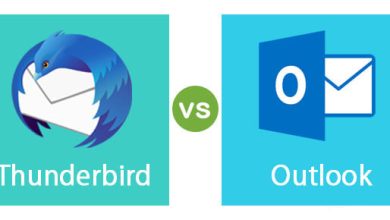Things You Should Consider About Microsoft Enterprise Services

The foundation of Microsoft’s Enterprise Services seems a tad bit somber and undefined on the surface. When you dig deep, there is more to it than meets the eye.
There are some of the most exceptional capabilities that you’ll find under the hood. Integrating Microsoft enterprise help you excellently enhance your distributed application architecture.
What are Microsoft Enterprise Services?
Enterprise Services contains three components: the Microsoft Operations Framework (MOF), the Microsoft Readiness Framework (MRF), and the Microsoft Solutions Framework (MSF). MOF implements technical supervision for utilizing Microsoft products to create mission-critical enterprise systems that are accessible, secure, and adaptable.
Microsoft Operations Framework contributes a plethora of white papers, case studies, assessment and maintenance tools, and guidelines for best practices and operations. It is a comprehensive set of tools and guides for data center management in a Microsoft environment.
Microsoft Solutions Framework offers the identical kinds of materials, with the addition of courseware, and highlights a project’s process and staffing elements. It pays particular attention to element design, infrastructure deployment, application development, and enterprise design.
Things to consider before choosing the right Microsoft Enterprise Services partner
Once a company’s digital transformation is underway, the digital service provider will not leave you to your own devices; they will help assemble the organization for digital progress. They help optimize their existing technology investments by proceeding to provide them with the assistance services they need to prevail confidently.
The reasons why one should opt for Microsoft technology integration when undergoing a digital transformation are:
Trust
With the accelerated progression of technology and digital aptitudes, organizations are looking for partners who can present complete support—from implementation to consultation and ideation. Companies should look for the trusted advisor of choice for technology reform and business conversion who can help them mobilize for success across the solution lifecycle.
Global
With the brisk progression of technology and digital abilities, organizations should look for partners who can contribute complete support, from implementation to deliberation and execution. Choose a partner who is a trusted advisor of choice for technology reform and business transformation.
Focused
Technology and business are focalizing at a quick pace. Growing customer expectations and an accelerated impetus of business means more weight on technology is required to progress. Your digital partner should be focused on assisting you in accelerating your digital journey, and should have a worldwide presence that helps you grow your projects from modest pilots into global solutions.
Secure
While the digital workplace has developed, the threat aspect across the globe has also increased. Look for a partner that provides businesses of all sizes guidance, strategies, and answers so they can develop a cyber-resilient infrastructure for their business.
Compliant
Every business has individual demands and purposes. There is no one size fits all solution which can deliver about a triumphant end-to-end digital transformation. Look for partners who have developed services to respond to your unique challenges and can operate across multiple digital platforms with the readiness and resources that work most desirably for you.
Features of Microsoft Application Services for enterprise
Enterprise Services can provide you to get the enterprise plunge. Here are some powerful features and tricks that aren’t particularly visible to the naked eye.
Optimize your apps with Microsoft Enterprise Services synchronization
Enterprise Services synchronization advances the collaboration techniques of COM+, driving you from apartments to activities: synchronization domains based on rational threads, rather than physical threats.
Synchronization domains procure the TNA (thread-neutral apartment) from COM+; activities leverage the TNA feature of splitting a thread that has entered via a custom call even after the method call is done, excluding a thread switch. Overhead is rigged because nothing changes but a few TNA variables. If your applications use synchronization domain ventures heavily, the overhead gains will be significant, and the environmental performance more optimal.
Easily handle application states
Microsoft enterprise Services empowers you to manage object states in different places, and your design decisions in this area can influence your application scalability. This happens because tracking object state across varied client calls to an object and then across many directions, can sum up to a highly notable consumption of resources.
In Enterprise Services, you can control the state at the serviced component level or the client application level by storing state values. There are many factors in choosing which level is available: How often does the state change? How fast can it be accessed? Is it linked to users, an application, or multiple applications? Are the components load-balanced?
If it makes sense, you can also save state values in a database. If it is useful, for instance, the state of an application must be reconstructed if your system goes down.
Conclusion
Distant from being a mere technology provider, the digital partner that you chose should be providing advisory services from the envisioning phase and business case improvement to design, deployment, change management, and much more.




One Comment